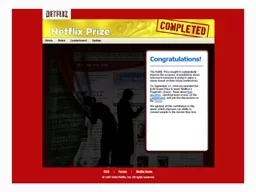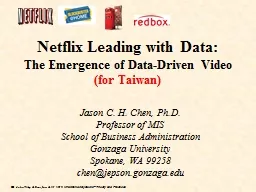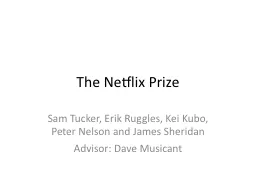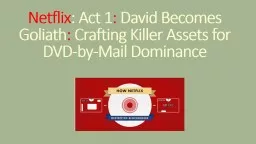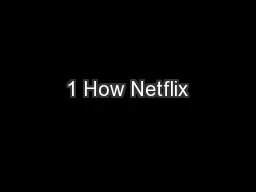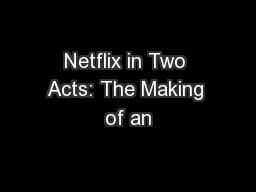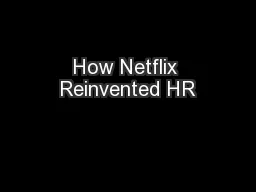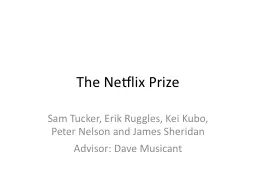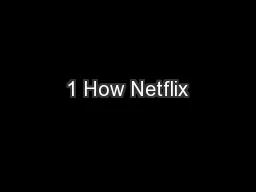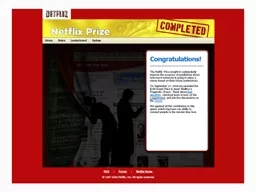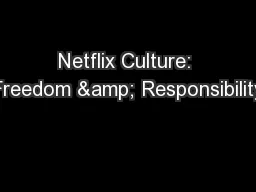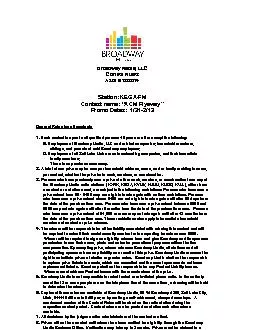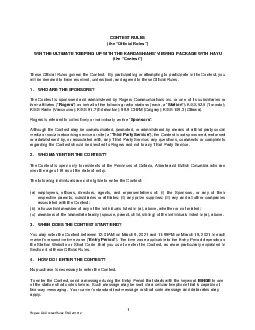PPT-The Netflix Prize Contest
Author : jane-oiler | Published Date : 2015-09-26
1 New Paths to New Machine Learning Science 2 How an Unruly Mob Almost Stole the Grand Prize at the Last Moment Jeff Howbert February 6 2012 Netflix Viewing Recommendations
Presentation Embed Code
Download Presentation
Download Presentation The PPT/PDF document "The Netflix Prize Contest" is the property of its rightful owner. Permission is granted to download and print the materials on this website for personal, non-commercial use only, and to display it on your personal computer provided you do not modify the materials and that you retain all copyright notices contained in the materials. By downloading content from our website, you accept the terms of this agreement.
The Netflix Prize Contest: Transcript
Download Rules Of Document
"The Netflix Prize Contest"The content belongs to its owner. You may download and print it for personal use, without modification, and keep all copyright notices. By downloading, you agree to these terms.
Related Documents

